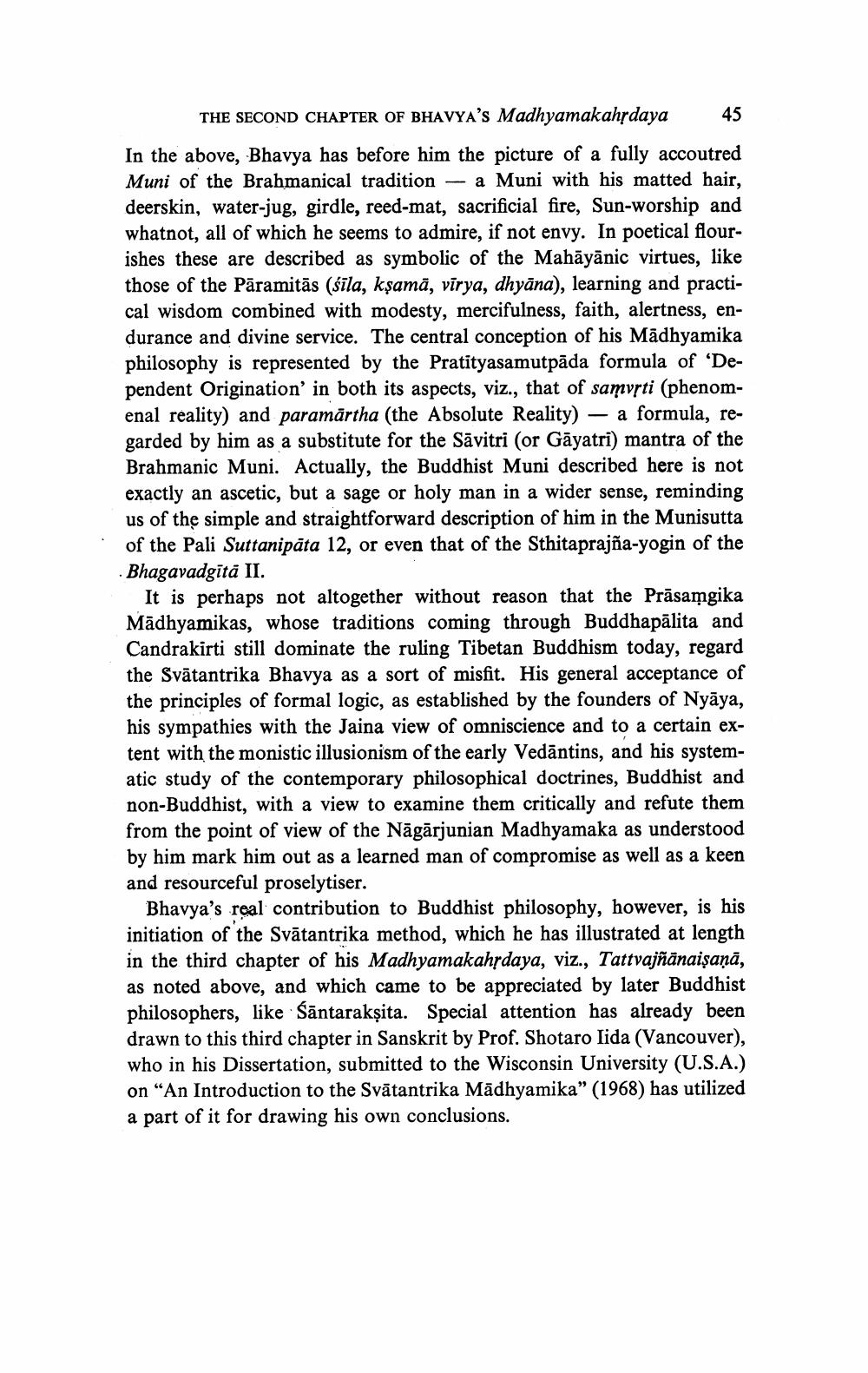Book Title: Second Chapter Of Bhavyas Madhyamakahrdaya Author(s): V V Gokhale Publisher: V V Gokhale View full book textPage 6
________________ THE SECOND CHAPTER OF BHAVYA's Madhyamakahrdaya 45 In the above, Bhavya has before him the picture of a fully accoutred Muni of the Brahmanical tradition - a Muni with his matted hair, deerskin, water-jug, girdle, reed-mat, sacrificial fire, Sun-worship and whatnot, all of which he seems to admire, if not envy. In poetical flourishes these are described as symbolic of the Mahayanic virtues, like those of the Paramitas (sila, ksama, virya, dhyana), learning and practical wisdom combined with modesty, mercifulness, faith, alertness, endurance and divine service. The central conception of his Madhyamika philosophy is represented by the Pratityasamutpada formula of 'Dependent Origination' in both its aspects, viz., that of samvrti (phenomenal reality) and paramartha (the Absolute Reality) - a formula, regarded by him as a substitute for the Savitri (or Gayatri) mantra of the Brahmanic Muni. Actually, the Buddhist Muni described here is not exactly an ascetic, but a sage or holy man in a wider sense, reminding us of the simple and straightforward description of him in the Munisutta of the Pali Suttanipata 12, or even that of the Sthitaprajna-yogin of the Bhagavadgita II. It is perhaps not altogether without reason that the Prasangika Madhyamikas, whose traditions coming through Buddhapalita and Candrakirti still dominate the ruling Tibetan Buddhism today, regard the Svatantrika Bhavya as a sort of misfit. His general acceptance of the principles of formal logic, as established by the founders of Nyaya, his sympathies with the Jaina view of omniscience and to a certain extent with the monistic illusionism of the early Vedantins, and his systematic study of the contemporary philosophical doctrines, Buddhist and non-Buddhist, with a view to examine them critically and refute them from the point of view of the Nagarjunian Madhyamaka as understood by him mark him out as a learned man of compromise as well as a keen and resourceful proselytiser. Bhavya's real contribution to Buddhist philosophy, however, is his initiation of the Svatantrika method, which he has illustrated at length in the third chapter of his Madhyamakahrdaya, viz., Tattvajnanaisana, as noted above, and which came to be appreciated by later Buddhist philosophers, like Santaraksita. Special attention has already been drawn to this third chapter in Sanskrit by Prof. Shotaro lida (Vancouver), who in his Dissertation, submitted to the Wisconsin University (U.S.A.) on "An Introduction to the Svatantrika Madhyamika" (1968) has utilized a part of it for drawing his own conclusions.Page Navigation
1 ... 4 5 6
